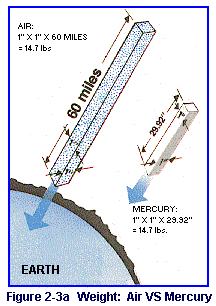 |
|||||
| Home | Research | For Teachers | HISTORY Level 1 Level 2 Level 3 |
PRINCIPLES Level 1 Level 2 Level 3 |
CAREER Level 1 Level 2 Level 3 |
| Gallery | Hot Links | What's New! | |||
| Web Administration and Tools | |||||
 |
|||||
| Home | Research | For Teachers | HISTORY Level 1 Level 2 Level 3 |
PRINCIPLES Level 1 Level 2 Level 3 |
CAREER Level 1 Level 2 Level 3 |
| Gallery | Hot Links | What's New! | |||
| Web Administration and Tools | |||||
![]()
At the end of this block of study, you should be able to:
![]() Be aware that changes in temperature bring about changes in the
form
Be aware that changes in temperature bring about changes in the
form
of the moisture in the air.
![]() Demonstrate that wind direction may be measured.
Demonstrate that wind direction may be measured.
![]() Describe that fogs and clouds are droplets of moisture which we can
see in the air.
Describe that fogs and clouds are droplets of moisture which we can
see in the air.
![]() Discuss how atmospheric pressure brings about changes in the
weather.
Discuss how atmospheric pressure brings about changes in the
weather.
![]() Demonstrate that air contains moisture that can be measured.
Demonstrate that air contains moisture that can be measured.
![]() Be aware that flight safety is made possible in part by the
knowledge of the
Be aware that flight safety is made possible in part by the
knowledge of the
relationships between
temperature and moisture conditions of the air, so that the pilot
can be advised where and how to
avoid dangerous conditions and how to take
advantage of favorable ones.
Pilots and air transportation are dependent on weather information in order to make flying safe and comfortable. There are many reasons why pilots need to know about the weather. Among them are knowing where they might encounter low visibility, where they might profit by flying above the clouds, where they might expect icing or strong winds, whether or not the terminal airport has an adequate ceiling. If weather is adverse, the pilot might need to change plans - either stay on the ground or choose another route. The pilot will need to take along more fuel if the airplane will be flying into a strong wind.
When planning a flight, the pilot contacts a flight service station for weather information. The flight service station receives weather reports from the United States Weather Bureau.
Weather forecasting is determined by the observation of such factors as temperature, winds, cloud, atmospheric pressure, humidity, dew point and frost.
The atmosphere and the earth receive their warmth from the sun. This warmth may vary from place to place and from day to day. The degree of hotness or coldness of the air around us is called temperature. Types of precipitation depend on temperature: rain in warm weather; snow and ice in cold weather.

The horizontal movement of air relative to the surface of the earth is known as wind. The force or velocity of the wind is measured by an instrument called the anemometer. Wind vanes, weather vanes and windsocks tell the direction from which the wind is blowing.
Clouds are visible clusters of small water drops and/or ice particles in the atmosphere.
| The body of air which surrounds the earth is called atmosphere. Since air itself exerts pressure, the pressure of the air surrounding the earth is referred to as atmospheric pressure. At sea level, air exerts a pressure of 14.7 pounds per square inch, but a cubic yard of it weighs only about 2 pounds. |  |
Dew is atmospheric moisture condensed as liquid upon objects cooler than air. Dew point is the temperature at which the air becomes saturated with water vapor and the relative humidity becomes 100 percent.
Frost is ice cryatals formed like dew, but at temperatures below freezing.
Humidity is the amount of moisture in the air. Relative humidity is the amount of moisture in a given body of air compared with the amount it is capable of holding at the prevailing pressure and temperature conditions.
![]() Experiment
9 - Temperature - Making An Air Thermometer
Experiment
9 - Temperature - Making An Air Thermometer
![]() Experiment
10 - Wind - Making A Wind Anemometer
Experiment
10 - Wind - Making A Wind Anemometer
![]() Experiment
11 - Wind - Making A Wind Vane
Experiment
11 - Wind - Making A Wind Vane
![]() Experiment
12 - Wind - Making A Weather Vane
Experiment
12 - Wind - Making A Weather Vane
![]() Experiment
13 - Wind - Making A Windsock
Experiment
13 - Wind - Making A Windsock
![]() Experiment
14 - Atmospheric Pressure - Making A Barometer
Experiment
14 - Atmospheric Pressure - Making A Barometer
![]() Experiment
15 - Humidity - Hair Hygrometer (Detects moisture in the air)
Experiment
15 - Humidity - Hair Hygrometer (Detects moisture in the air)
![]() Experiment
16 - Demonstrating Dew and Frost
Experiment
16 - Demonstrating Dew and Frost
Send all comments to ![]() aeromaster@eng.fiu.edu
aeromaster@eng.fiu.edu
© 1995-98 ALLSTAR Network. All rights reserved worldwide.
Updated: February 23, 1999